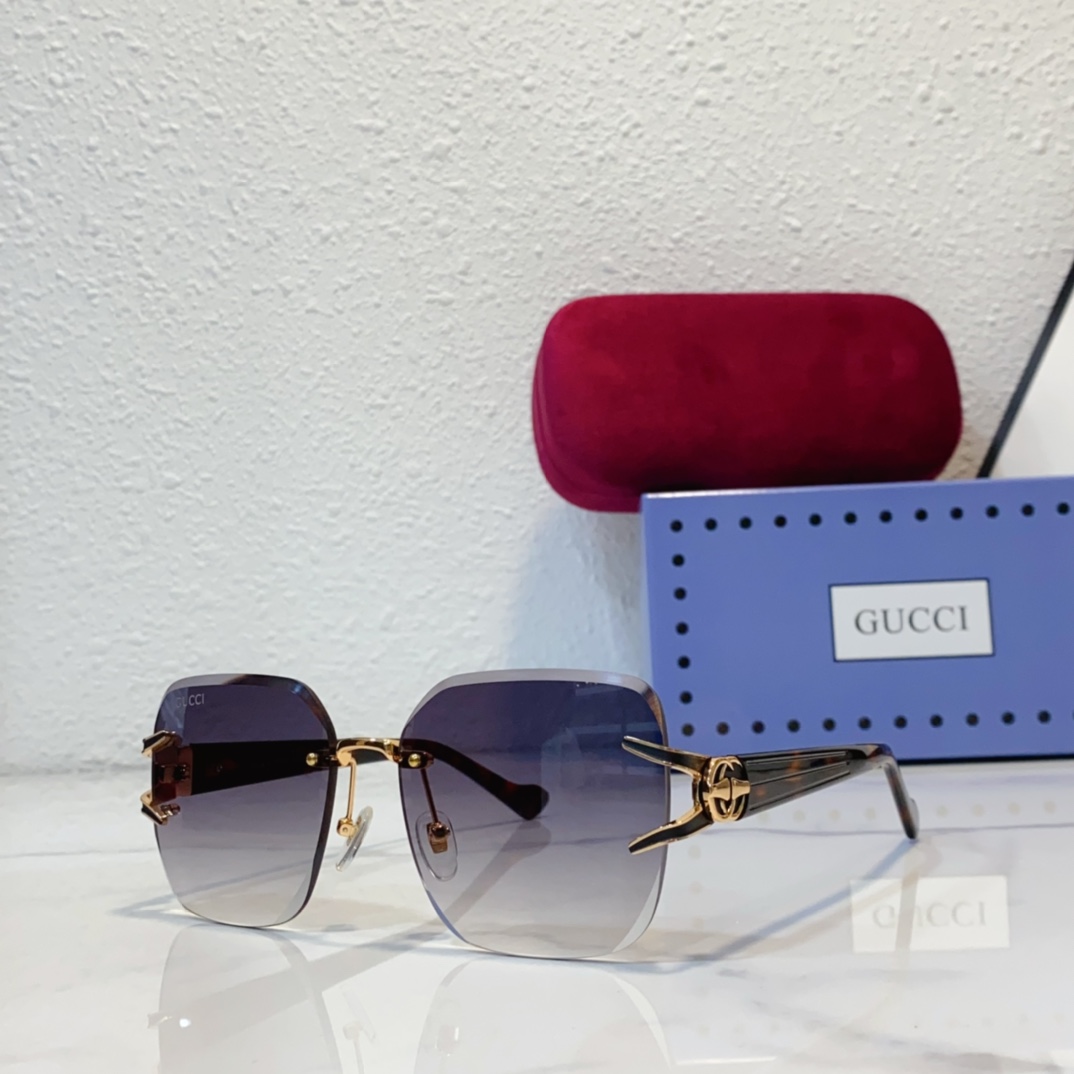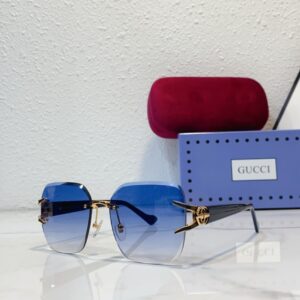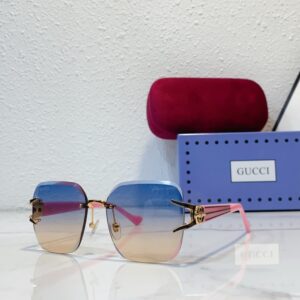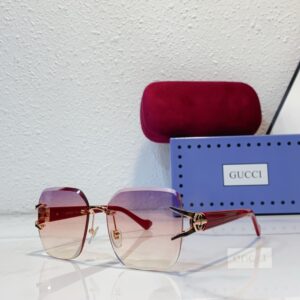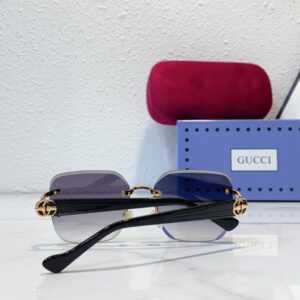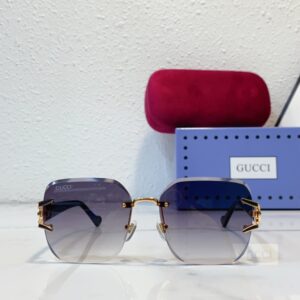Understanding Replica Sunglasses
Replica sunglasses are designed to mimic the look and style of high-end eyewear brands without the associated price tags. Often crafted with similarity to popular designer models, these sunglasses appeal to consumers seeking fashionable designs at a significantly lower cost. The market for replica eyewear has flourished as fashion trends evolve, allowing individuals to accessorize without the financial burden of purchasing authentic items. Some enthusiasts may argue that replica sunglasses allow for greater experimentation with various styles and trends.
One of the primary distinctions between replica sunglasses and their authentic counterparts lies in their production methods and materials. While authentic brands utilize premium materials and advanced manufacturing techniques that enhance durability and lens clarity, replicas may fall short in these areas. However, manufacturers of replicas strive to create visually appealing products that fulfill the consumer’s desire for style, often using materials that are visually similar but not necessarily of the same quality. Such variations can impact the longevity and performance of the lenses, which is an important consideration for potential buyers.
Individuals often choose to purchase replica sunglasses for multiple reasons. For some, the cost-effectiveness of replicas is a compelling factor. A designer pair can range from hundreds to thousands of dollars, while replicas typically offer a fraction of that price. Additionally, cultural factors play a significant role in the decision to buy replicas. In various social settings, wearing fashionable yet more affordable replicas can enhance an individual’s status among peers, providing a sense of style without compromising their budget. This phenomenon illustrates the complex relationship between consumerism, identity, and the fashion industry, making replica sunglasses a prevalent choice amid a diverse demographic.
The Importance of Lens Quality
When selecting replica sunglasses, lens quality stands as a crucial component that significantly influences both vision clarity and eye safety. High-quality lenses enhance the overall experience by providing better optical clarity, reducing glare, and ensuring appropriate UV protection. In contrast, low-quality lenses can adversely affect vision and may lead to discomfort or impaired perception.
Replica sunglasses often utilize various lens materials, including polycarbonate, CR-39, and glass. Polycarbonate lenses are lightweight and highly impact-resistant, making them ideal for everyday wear. Meanwhile, CR-39 lenses are known for their optical clarity and scratch resistance, offering a balanced option for both aesthetics and function. Glass lenses, while providing excellent optical quality, are heavier and more prone to shattering compared to their counterparts. It is imperative for consumers to be mindful of these materials when purchasing replica eyewear, as the choice directly impacts the durability and safety of the lenses.
One of the primary risks associated with inferior lens quality is inadequate UV protection. Low-quality lenses may lack proper coatings or fail to filter harmful ultraviolet rays effectively. This can result in long-term eye damage, including cataracts and macular degeneration. Thus, prioritizing high-quality lenses in replica sunglasses is essential for safeguarding one’s vision. Furthermore, poor optical quality can lead to headaches, eyestrain, and unbalanced vision, which complicates outdoor activities and drives safety concerns.
To ensure that you make an informed decision regarding your sunglasses, it is vital to verify the specifications relating to lens quality, including UV protection levels and material composition. By doing so, you not only enhance visual experience but also protect your eyes from potential dangers associated with low-quality lenses.
How to Replace Lenses in Replica Sunglasses
Replacing lenses in replica sunglasses can significantly enhance their functionality and aesthetic appeal. To begin the process, it’s essential to gather the necessary tools: a flathead screwdriver, microfiber cloth, lens replacement kit, and, most importantly, new lenses suited for your specific frame model. Many online retailers offer a variety of lens options, including polarized, tinted, or UV-blocking variants.
Once you have everything prepared, ensure you work in a well-lit area to avoid any errors. Start by carefully removing the old lenses from the frames. Using a flathead screwdriver, gently pry the lenses from the frame’s edge. It’s crucial to apply even pressure to prevent damaging the frame. Be mindful of the orientation of the lenses, as this will aid in correctly positioning the new ones.
When selecting replacement lenses, consider factors such as lens material and thickness. Polycarbonate lenses are lightweight and impact-resistant, which enhances the durability of your replica sunglasses. Opting for higher-quality lenses can improve vision clarity and provide superior UV protection, making them safer for outdoor use.
As you place the new lenses into the frames, ensure they fit snugly and securely. This is where many people make common mistakes; avoid forcing the lenses in place, as this can lead to damage. Instead, make sure to align the holes with the frame accurately. If the lenses do not fit as intended, double-check the measurements against the frames or consult the manufacturer’s specifications.
After the lenses are properly installed, conduct a visual inspection for any gaps or misalignments. Cleaning the lenses with a microfiber cloth will remove any smudges or fingerprints and provide a clearer view. Successfully replacing lenses in replica sunglasses can breathe new life into beloved eyewear, ensuring better vision quality and enhancing protection against environmental factors.
Crafting Unique Cases for Replica Eyewear
The importance of protecting one’s replica sunglasses cannot be overstated, and customizing a unique case can enhance both functionality and style. Crafting a personalized case allows individuals to express their creativity while ensuring that their sunglasses are safeguarded against scratches and potential damage. There are numerous materials to consider when embarking on this creative journey, including fabric, cardboard, and even repurposed items that one may already have at home.
For those interested in utilizing fabric, consider sewing a soft pouch that can be lined with a plush material for added protection. This approach not only cushions the sunglasses but also enables the use of vibrant colors and patterns that resonate with personal taste. By incorporating drawstrings or Velcro closures, individuals can design a case that is both aesthetically pleasing and practical.
Cardboard also presents a fantastic opportunity for DIY enthusiasts. For instance, an old shoebox can be transformed into a sturdy case by cutting and decorating it with paint or decorative paper. This method encourages creativity, as one can design a case that reflects their unique style while maintaining a robust structure to protect the eyewear. In addition, repurposing items such as old hard-shell cases from other accessories can be an excellent way to recycle while achieving practical results.
Personalization is key in this crafting process. Embellishing cases with stickers, patches, or even hand-painted designs can add a personal touch. Furthermore, adding a layer of soft fabric inside any case, regardless of the material used, will help minimize scratches and damage from daily use. By taking these steps, individuals can ensure their replica sunglasses remain in excellent condition while also celebrating their unique style and creativity.
Are Knockoff Sunglasses Safe for Your Eyes?
When considering the safety of knockoff sunglasses, it is crucial to examine their UV protection capabilities. Many counterfeit sunglasses are manufactured without adhering to recognized safety standards, meaning they may not provide adequate defense against harmful ultraviolet (UV) rays. Prolonged exposure to sunlight without proper protection can lead to various eye conditions, such as cataracts and macular degeneration. As such, ensuring that any pair of replica sunglasses offers effective UV shielding is of utmost importance to protect the eyes.
Additionally, lens quality in knockoff sunglasses can vary significantly. Poorly manufactured lenses might have distortion issues, impairing vision clarity and depth perception. Such optical distortions can lead to discomfort while wearing the glasses and may even contribute to accidents, especially during activities like driving. When assessing the safety of sunglasses, it is advisable to scrutinize the lens material and quality, ensuring they are designed to minimize distortion and provide a clear view.
Another safety concern is the impact resistance of knockoff sunglasses. Unlike authentic eyewear crafted from materials tested for durability, many replicas are made from inferior plastics that could shatter or crack upon impact. This raises the risk of eye injuries from flying debris or accidental drops. When shopping for replica sunglasses, consumers should search for indicators of impact resistance, like labels confirming compliance with safety standards such as ANSI Z80.3.
In conclusion, while the allure of knockoff sunglasses may be tempting due to their lower prices, the potential dangers they pose to eye health cannot be overlooked. Consumers should prioritize UV protection, lens quality, and impact resistance when selecting sunglasses, ensuring that their choice safeguards their vision effectively while enjoying fashionable eyewear.
Legal Implications of Using Replica Sunglasses
The landscape surrounding replica sunglasses is complex, particularly when it comes to legal implications. A key distinction that must be understood is the difference between counterfeit and replica products. Counterfeit items are generally designed to deceive consumers into believing they are purchasing genuine products. In contrast, replicas may mimic the style without directly violating trademarks or copyrights. Nevertheless, the legality of replica sunglasses varies across jurisdictions and is influenced by the specific characteristics of the product and its marketing.
From a copyright perspective, replicated designs can infringe on the intellectual property rights of original designers. In many countries, including those governed by strict intellectual property laws, wearing or selling replica sunglasses can lead to legal repercussions. For instance, the European Union has stringent regulations against counterfeit goods that can extend to replicas, leading to potential fines and other penalties for retailers and consumers alike. In the United States, trademark law also plays a crucial role. Brands have the right to protect their logos and distinctive features, and if a replica product is deemed confusingly similar to a registered trademark, legal action may ensue.
The implications extend beyond just production and sales; consumers purchasing replica eyewear should remain aware of their legal standing. While individuals are typically less likely to face legal repercussions for personal use, selling such items can pose significant risks, especially if the replicas closely mimic trademarked styles. In some areas, there are initiatives aimed at educating consumers on the risks associated with buying replicas, including potential contribution to broader issues like organized crime in counterfeit markets.
Therefore, individuals interested in purchasing replica sunglasses should conduct thorough research regarding local laws and regulations to navigate the legal landscape safely. Understanding these implications not only protects consumers but also promotes ethical consumption practices in the fashion industry.
Spotting Quality in Replica Sunglasses
When navigating the market for replica sunglasses, discerning between high-quality options and inferior imitations is paramount. Several factors play a crucial role in identifying quality. One of the most significant aspects is the material used in the construction of the sunglasses. High-quality replicas typically utilize durable materials such as polycarbonate or metal frames, which provide a sturdy feel and are less prone to breakage. In contrast, poor-quality replicas often utilize flimsy plastics that may not withstand regular use.
Moreover, design details can reveal much about the quality of replica sunglasses. Well-crafted replicas often mimic their authentic counterparts accurately, boasting precise geometric shapes and well-aligned components. Pay attention to elements such as the hinges, which should operate smoothly without any wobble. Any signs of misalignment in the design, such as uneven lenses or crooked frames, may suggest a lower quality imitation. Legitimate replicas often feature a quality lens tint and coating that can resist scratches, while inferior versions may appear uneven or ineffective.
Authentic branding cues also serve as important indicators. Many high-quality replicas feature the same logos, tags, or engravings as the authentic models. These branding elements should be precisely placed and clearly visible; any blurriness or misspellings can be a red flag. Additionally, consider the packaging: well-made replicas often come with branded cases or cleaning cloths that reflect the brand’s quality standards. Investing time in assessing these aspects will empower consumers to make informed decisions when purchasing replica sunglasses.
Maintenance Tips for Replica Sunglasses
Proper maintenance of replica sunglasses is fundamental in prolonging their lifespan and maintaining their aesthetic appeal. Daily care is crucial; always take a moment to handle sunglasses with clean and dry hands. Avoid using them in harsh conditions or exposing them to extreme temperatures, as this can lead to damage. When not in use, store the sunglasses in a protective case to prevent scratches, breaks, or other damage. If a case is not available, placing them lens-down on a soft surface can also provide a level of protection.
Cleaning is another essential aspect of maintenance. Regularly remove smudges and dirt using a microfiber cloth, as its fine fibers are gentle on the lenses compared to paper towels or other abrasive materials. Consider investing in a lens cleaner specifically designed for eyewear, avoiding products with ammonia or strong chemicals that could harm the lenses and frames. In instances where dirt accumulates, rinsing the lenses gently under lukewarm water can help loosen debris before gently wiping them with a cloth. Always ensure the lenses are completely dry before storing them back in their case.
Regular inspections of replica sunglasses are integral to maintaining their functionality. Examine the frames for any signs of wear, such as cracks or loose hinges, and check the lenses for scratches or other imperfections. Addressing these minor issues promptly can prevent further deterioration. Additionally, if you notice any misalignment, it might be necessary to adjust or seek professional help to restore their proper fit. This consistent care will contribute significantly to the longevity of your replica sunglasses, ensuring they remain a stylish accessory for years to come.
Community Perspectives: Sharing Your Replica Sunglasses Journey
Engaging with fellow enthusiasts of replica sunglasses can provide invaluable insights and experiences. As the popularity of replica eyewear continues to grow, so does the community surrounding it. Many individuals take pride in their creative approaches to modifying and personalizing their replica sunglasses, particularly in aspects such as lens replacement and case design.
Lens replacement has proven to be a common topic of discussion among users of replica eyewear. Many have successfully completed DIY lens replacements, allowing them to enhance both functionality and aesthetic appeal. Readers are encouraged to share their stories, discussing the specific types of lenses they selected, the tools utilized during the process, and any tips they have garnered along the way. This exchange of experiences can serve as a helpful resource for newcomers looking to improve their own replica sunglasses.
In addition to lens modifications, many individuals have created unique cases tailored to protect and showcase their cherished sunglasses. It would be beneficial for readers to share their innovative designs, detailing the materials and methods employed. Recognizing the diverse range of styles can inspire others to explore new avenues in case design that prioritize both durability and flair, enhancing the overall experience of owning replica eyewear.
Finally, discussions surrounding durability and safety concerns of replica sunglasses are critical. Readers can provide their perspectives on the longevity of replica eyewear compared to original brands. Sharing personal experiences related to comfort, the performance of materials, and the effectiveness of protection from UV rays will enable deeper understanding within the community. Encouraging an open conversation regarding the pros and cons of replica sunglasses serves to foster connections among enthusiasts while ensuring informed decisions are made for future purchases.
In summary, the journey of owning replica sunglasses can be enriched through shared experiences. By highlighting DIY successes in lens replacement, unique case creations, and insights into durability, readers will contribute to an informed and engaged community, ultimately enhancing their enjoyment of replica eyewear.
